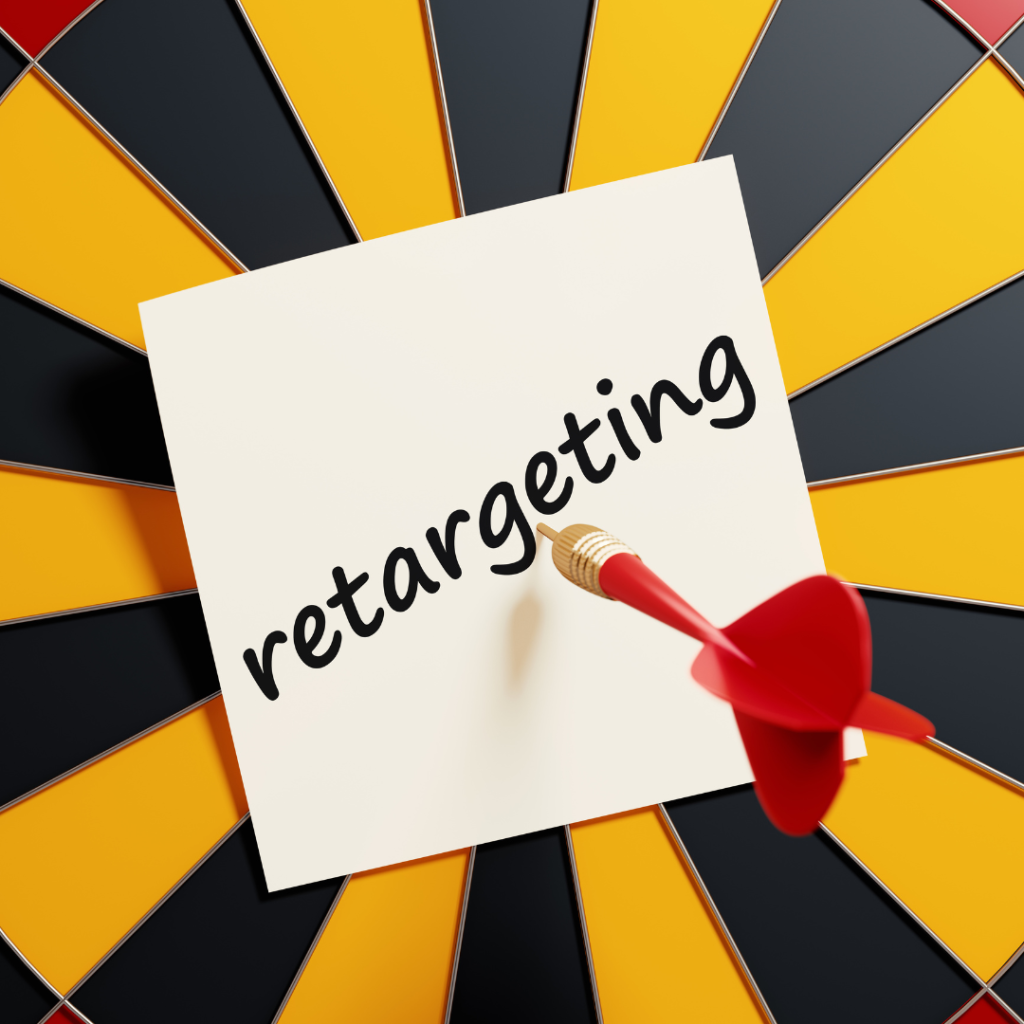Retargeting Strategies to Win Back Lost Customers
Did you know that 98% of website visitors don’t convert on their first visit? For service-based businesses, this might sound frustrating, but here’s the good news. Those visitors don’t have to be lost forever. With smart retargeting strategies, you can re-engage potential customers, guide them back to your website, and convert them into loyal clients.
This article will cover the ins and outs of retargeting, how it works, and actionable strategies to win back lost leads. If you’re a service-based business looking to maximize conversions, read on!

How Retargeting Works
Retargeting is a digital marketing strategy that allows businesses to reconnect with people who have shown interest in their services but didn’t take the final step. Think of it as a gentle nudge to remind them why they need you.
The Role of Tracking Pixels and Cookies
Tracking pixels and cookies help businesses understand and engage with their audience. Cookies are small files stored on a browser that let websites remember preferences, track behavior, and deliver personalized content. Tracking pixels are tiny, invisible images on web pages or emails that send data back to businesses when users interact with them.
Tools like Google Ads and Facebook Pixel efficiently track user activity across platforms, helping businesses optimize their marketing strategies. Here’s a breakdown of these tools and their key features:
- Facebook Pixel:
- Tracks conversions to measure the success of ads.
- Optimizes ad campaigns for better performance.
- Builds custom audiences for precise retargeting efforts.
- Google Ads:
- Monitors website traffic and user actions.
- Provides insights to refine marketing strategies.
- Helps identify where users drop off in the decision-making process.
By leveraging these tools, businesses can gain valuable insights into customer behavior and design targeted campaigns to boost engagement and conversions.
The Customer Journey and Retargeting Touchpoints
Retargeting plays a pivotal role throughout the customer journey, ensuring businesses can re-engage users at key stages. Below is an overview of common retargeting touchpoints:
- Website Visit Without Action – A user browses your site but doesn’t proceed to book a service or complete a desired action.
- Abandoned Carts or Forms – Prospects initiate but do not finalize transactions or form submissions.
- Ad Engagement Without Conversion – A potential customer clicks your ad, showing interest, but fails to convert.
- Dormant Customers – Existing clients who haven’t interacted with your services in a while.
To visualize this process, here’s a simple flow of the customer retargeting journey:
| Stage | Customer Behavior | Retargeting Strategy |
| Website Visit | No action taken | Serve dynamic ads reminding them of services |
| Abandoned Cart or Form Fill | Partial completion of checkout | Email reminders or ads featuring their unfinished action |
| Ad Engagement Without Conversion | Clicks but no follow-through | Retarget with ads offering more information or a benefit |
| Dormant Customers | No recent interactions | Personalized outreach with tailored offers |
By mapping these touchpoints and implementing strategic retargeting efforts, businesses can maintain engagement, nurture leads, and turn opportunities into conversions.
Top Retargeting Strategies to Bring Customers Back
To make your retargeting campaigns successful, it’s important to tailor them to specific user actions. Here are some effective strategies:
Segmented Ad Campaigns Based on User Behavior
Retargeting users based on their behavior is a game-changer for creating hyper-focused ad campaigns. By analyzing specific actions—or inactions—on your website, you can tailor your messaging to address their exact needs.
For example:
- A roofing company can retarget users who visited their pricing page with ads asking, “Still thinking about a new roof? Book a free consultation today!”
- A plumbing service might target users who viewed their emergency services with an ad like, “24/7 Emergency Plumbing—Call Us Now!”
Dynamic Retargeting for Personalized Ads
Dynamic retargeting takes personalization to the next level by displaying ads that showcase the exact product or service a user previously interacted with. This approach keeps the user’s interests top of mind and increases conversion rates.
For instance, if someone explored a specific HVAC service on your website but didn’t take further action, you could serve them an ad reminding them to book a consultation, complete with an enticing call-to-action like “Schedule today and enjoy 15% off your first appointment.”
Multi-Channel Retargeting for Maximum Reach
To maximize your retargeting efforts, it’s essential to leverage multiple platforms to reach your audience wherever they are. A combination of Google Ads, Facebook, Instagram, and LinkedIn enables you to stay top of mind while adhering to each platform’s unique ad guidelines.
For example, carousel ads might grab attention on Facebook, while testimonial videos could work wonders on Instagram Stories. Matching your creatives to each platform’s best practices ensures a stronger, more cohesive campaign.
Time-Sensitive Retargeting Offers
Creating a sense of urgency is a proven strategy for encouraging users to take action. Time-sensitive retargeting ads use limited-time promotions, discounts, or follow-up messages to create that extra push.
For example, an ad could declare, “Get 10% off your first plumbing service—offer expires in 48 hours!” This tactic ties urgency to value, driving users to prioritize their decision-making, especially during high-demand periods.
Common Mistakes That Hurt Retargeting Campaigns
Even smart marketers fall into these pitfalls when running retargeting campaigns. Avoid these to ensure your efforts are effective:
Overwhelming Users with Too Many Ads
Ad fatigue is real, and it can quickly turn potential customers away if they feel bombarded. When users see the same ad repeatedly, they’re more likely to tune it out—or worse, develop a negative perception of your brand. To avoid this, set frequency caps on your campaigns to ensure your ads aren’t overexposed.
For example, a local contractor may want to show ads to their target audience a few times a week, not every single day. A balanced ad schedule helps you stay on their radar without overwhelming them.
Retargeting Too Broadly
Retargeting is powerful, but it only works when it’s focused on the right behaviors. If you cast too wide a net, your ads might show to people who aren’t genuinely interested or who’ve already moved on—wasting both your budget and their attention.
Refine your retargeting lists to focus on users who’ve taken meaningful actions, like adding items to their cart or visiting key pages. Exclude converted customers—chasing buyers wastes resources and can hurt your brand’s credibility.
Ignoring Ad Creative and Messaging Variations
Nothing kills campaign performance faster than stale, repetitive ads. People crave variety, so keep your ad creative fresh and engaging. Don’t use generic, repetitive ads across all campaigns. Instead, do the following:
- Test A/B variations of your messaging. For instance, compare “Still thinking about our pest control services?” and “It’s time to stop pests for good—call us today.”
- Refresh ad visuals regularly to maintain interest.

Key Metrics for Retargeting Campaigns
Tracking your campaign performance will help you identify what’s working and where to improve. Focus on the following metrics:
Click-Through Rate (CTR) and Conversion Rate
CTR tells you how many users clicked on your ad, while conversion rate shows how many of those clicks led to a desired action (e.g., filling out a form). A high CTR but low conversion rate might signal a misalignment in messaging or landing page design.
Cost-Per-Click (CPC) and Return on Ad Spend (ROAS)
CPC helps measure ad efficiency, while ROAS tracks overall campaign profitability. For every dollar spent, how much are you earning? A roofing company, for example, might aim for a 10x ROAS from retargeting efforts.
Engagement Metrics
Beyond direct clicks, consider metrics like bounce rate and time spent on site after an ad click. These stats can help you assess how well your landing pages engage retargeted users.
Is Retargeting Worth It for Your Business?
Retargeting isn’t for everyone, but it’s incredibly valuable for many service-based businesses.
When to Invest in Retargeting
Retargeting is ideal for:
- Service industries with higher consideration periods (e.g., HVAC repairs, contractors, and legal services).
- Businesses with a steady stream of website traffic looking to recapture potential leads.
Who Should Skip Retargeting?
If you’re working with low website traffic or a tiny marketing budget, focus on driving initial visitors through SEO or PPC campaigns instead. Also, businesses with quick, one-time transactions may find less value in retargeting.
Pro tip: “Retargeting is one of the most cost-effective ways to stay top of mind,” says Avram Gonzales, CEO of Digital Harvest. “If a potential customer didn’t act the first time, you remind them why they need you.”
Bring Back Customers with Strategic Retargeting
Retargeting is a powerful way to re-engage lost prospects. By creating segmented, personalized campaigns and avoiding common mistakes like ad fatigue, you can maximize your conversions and stretch your marketing budget further.
Interested in getting started? Contact Digital Harvest today or connect with Avram Gonzales on LinkedIn for expert help optimizing retargeting campaigns that deliver results!
